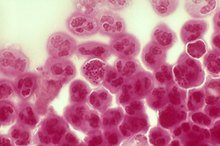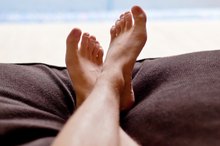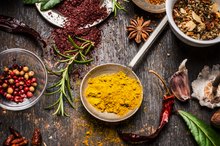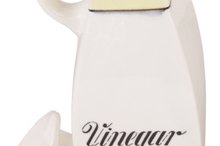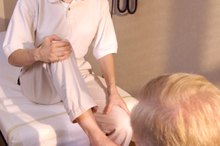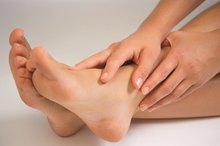The Use of White Vinegar to Cure Yeast Infections
A vaginal yeast infection isn’t always a one-time occurrence for some individuals. If they are recurring, treatment options may not continue to treat the problem, because sometimes overuse or abuse of prescribed and over-the-counter treatments cause an individual’s body to become immune to these treatment options. Contrary to popular belief that only women get yeast infections, both men and women can get yeast infections.
If you are experiencing serious medical symptoms, seek emergency treatment immediately.
Why Does Vinegar Work?
Yeast grows in areas that are naturally full of moisture. Yeast is a natural part of the body, but sometimes individuals experience an overgrowth of yeast, which turns into an infection. White vinegar is a natural antiseptic, which is why applying it to an infected area can help clear up the infection. White vinegar can also be beneficial in odors commonly associated with yeast infections. White vinegar treats yeast infections because it has a pH level of 5.5, which makes it extremely acidic. For a stronger dose, try organic apple cider vinegar, which has a pH level of 7.5. Organic apple cider vinegar has a higher pH level, making it more acidic than other apple cider vinegar.
- Yeast grows in areas that are naturally full of moisture.
- White vinegar is a natural antiseptic, which is why applying it to an infected area can help clear up the infection.
How Do You Use It?
Can Cranberry Juice Treat Gonorrhea?
Learn More
There are several different ways you can apply the white or apple cider vinegar to treat an infection. Add 1 to 2 cups of white vinegar to your warm bathwater as you are filling up the tub. Also add 1 cup of Epsom salt to the water. Avoid bubble bath because this can sometimes cause further infection. Sit in the bathtub, soaking the infected areas for at least 15 minutes. Completely and thoroughly dry your entire body, paying close attention to your personal areas, before dressing with a clean, dry towel.
The second method is to mix ½ cup of white vinegar with ½ cup of water in a spray bottle and to wash down the area using the spray bottle and patting it dry with a towel several times a day throughout the day. By putting the solution in a spray bottle, you can use it to spritz off your personal areas after going to the bathroom. Allow the area to dry; do not rinse. Again, make sure you thoroughly dry the areas before redressing.
- There are several different ways you can apply the white or apple cider vinegar to treat an infection.
- By putting the solution in a spray bottle, you can use it to spritz off your personal areas after going to the bathroom.
Using Vinegar Orally
A yeast infection in the mouth is sometimes referred to as oral thrush and is common in infants. A mixture of white vinegar and water (1 to 2 teaspoons of vinegar per 8 ounces of water) makes a mouth solution for an oral yeast infection. You can either sip on the water throughout the day or gargle with the mixture like you would with a mouthwash solution.
Apple cider vinegar will also work if you do not have any white vinegar on hand. Both have antiseptic qualities and are beneficial in treating yeast infections.
- A yeast infection in the mouth is sometimes referred to as oral thrush and is common in infants.
- Apple cider vinegar will also work if you do not have any white vinegar on hand.
Related Articles
References
- Shishehbor F, Mansoori A, Shirani F. Vinegar consumption can attenuate postprandial glucose and insulin responses; a systematic review and meta-analysis of clinical trials. Diabetes Res Clin Pract. 2017;127:1-9. doi:10.1016/j.diabres.2017.01.021
- Kondo T, Kishi M, Fushimi T, Ugajin S, Kaga T. Vinegar intake reduces body weight, body fat mass, and serum triglyceride levels in obese Japanese subjects. Biosci Biotechnol Biochem. 2009;73(8):1837-43. doi:10.1271/bbb.90231
- Mohammad P, Mojtaba H, Mohammad N. Successful treatment of chronic scalp seborrheic dermatitis using traditional Persian medicine: a case report and literature review. Galen Med J. 2017;6:157-9. doi:10.22086/GMJ.V6I2.706
- Yagnik D, Serafin V, J Shah A. Antimicrobial activity of apple cider vinegar against Escherichia coli, Staphylococcus aureus and Candida albicans; downregulating cytokine and microbial protein expression. Sci Rep. 2018;8(1):1732. doi:10.1038/s41598-017-18618-x
- Atik D, Atik C, Karatepe C. The effect of external apple vinegar application on varicosity symptoms, pain, and social appearance anxiety: a randomized controlled trial. Evid Based Complement Alternat Med. 2016;2016:6473678. doi:10.1155/2016/6473678
- Chang J, Han SE, Paik SS, Kim YJ. Corrosive esophageal injury due to a commercial vinegar beverage in an adolescent. Clin Endosc. 2019 Aug;2019:ce.2019.066. doi:10.5946/ce.2019.066
- Biswal B. Drug-excipient interaction study for apple cider vinegar with 20 potential excipients using modern analytical techniques. Asian J Pharma. 2016;2016:107. doi:10.22377/ajp.v10i1.530
Writer Bio
Based in the Midwest, Beth Lytle has been writing professionally since 2008. Working as an editor and with recent work published on eHow, LiveStrong and the Bayer Aspirin website, Lytle is a self-made freelancer. Lytle writes health-related and home-improvement articles, first beginning her writing journey while attending writing workshops and classes during childhood. Lytle has owned transcription and commercial construction companies since 2006.
